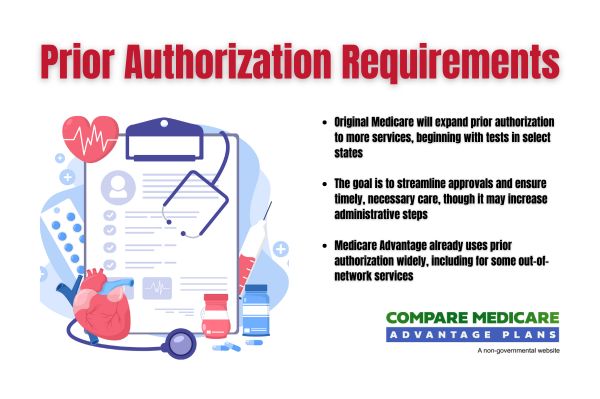Medicare Advantage HMO Plan Overview
Medicare Advantage HMO plans are favored by many beneficiaries for their comprehensive benefits provided through a network of in-network providers. Typically, services outside this network are not covered, making it crucial to choose providers within the plan’s network. Additionally, around 75% of enrollees do not pay extra premiums beyond the standard Medicare Part B premium.
Enrollment in Medicare Advantage HMO plans has significantly grown, with 56% of beneficiaries now choosing this type of Medicare Advantage plan. This popularity stems from the comprehensive coverage, often including benefits not available under traditional Medicare. However, these plans usually require prior authorization for many higher-cost services, impacting nearly all enrollees.
Understanding Medicare Advantage HMO plans is key to making informed healthcare decisions. These plans differ from traditional Medicare by focusing on coordinated care within a defined network, potentially leading to more efficient and effective healthcare delivery.
Key Updates for 2026
The year 2026 brings several key updates to Medicare Advantage plans, designed to improve coverage and reduce costs for beneficiaries. One of the most significant changes stems from the Inflation Reduction Act, which includes six key reforms mainly focusing on Medicare Part D programs, affecting drug prices and coverage. Additionally, the 2025 budget reconciliation legislation, signed into law on July 4, 2025, involves adjustments to Medicaid, the Affordable Care Act, and Medicare, ensuring a more integrated approach to healthcare, including IRA-related provisions and future rulemaking.
In 2026, Medicare Advantage plans will experience the following changes:
- An average payment increase of 5.06 percent, reflecting the government’s financial support.
- An expected boost to enhance care quality and expand available services.
- A deadline for 2026 MA plan bids set for June 2, 2025, ensuring readiness to meet new requirements.
Another notable update involves the policy changes that include the omission of expansion for anti-obesity medications and modifications to utilization management practices. Beneficiaries must understand these updates as they directly impact the adverse plan decisions regarding the coverage and benefits available under Medicare Advantage plans in the coming year.
Enhanced Benefits and Coverage Options
In 2026, Medicare Advantage plans will offer enhanced benefits and coverage options, thanks to increased rebate payments from Medicare. These rebates enable HMO plans to provide additional benefits without raising premiums, making these plans more attractive to beneficiaries. Enhanced benefits tailored to enrollees’ specific needs, including services for chronic conditions, aim to improve overall health outcomes.
Significant enhancements include expanded coverage beyond traditional Medicare, incorporating services such as vision, dental, and hearing, which Original Medicare typically does not cover. These additional services provide comprehensive care and improve enrollees’ quality of life. This plan covers a wide range of essential services, including Part C options.
Additionally, Medicare Advantage plans will offer improved access to care through enhanced coordination and management services. These changes reflect a trend towards holistic health care coverage, addressing both immediate medical needs and long-term health and wellness. This approach ensures that Medicare Advantage plans remain a viable and attractive option for comprehensive healthcare coverage.
Cost-Sharing Changes
Cost-sharing is a critical aspect of healthcare plans, and Medicare Advantage plans are no exception. In 2024, the average out-of-pocket limit for Medicare Advantage enrollees is set at $4,882 for in-network services, providing clarity on potential financial obligations. However, the out-of-pocket limit cannot exceed $8,850 for in-network services, safeguarding against excessive healthcare costs.
A key advantage of Medicare Advantage plans is the out-of-pocket limit for covered services, which traditional Medicare does not offer. This feature benefits those requiring frequent medical services by capping annual expenses, providing financial predictability, and peace of mind.
Conversely, beneficiaries in HMOs are responsible for all costs incurred from out-of-network services, highlighting the importance of staying within the network.
These cost-sharing changes aim to make healthcare more affordable and predictable for Medicare Advantage enrollees. Understanding these limits and staying within the network allows beneficiaries to manage applicable cost-sharing effectively and avoid unexpected financial burdens.
Integration with Medicaid Services
Moving forward, integrating Medicaid services will be a significant focus for Medicare Advantage plans and Medicare and Medicaid plans. By 2027, Medicare will implement a health risk assessment process for dual-eligible special needs plans, enhancing care coordination for beneficiaries who qualify for both Medicare and Medicaid. This integrated approach aims to provide more comprehensive and cohesive care, addressing these individuals’ unique needs.
New regulations will simplify conducting health risk assessments for special needs plans, ensuring these assessments contribute to better health outcomes. Additionally, the final rule regarding Special Supplemental Benefits for the Chronically Ill (SSBCI) will have regulatory requirements to ensure effective health improvement for eligible enrollees.
Efforts to integrate Medicare and Medicaid services reflect a broader commitment to providing high-quality, coordinated care for vulnerable populations. By streamlining processes and enhancing benefits, these changes aim to improve health outcomes and overall quality of life for dual-eligible beneficiaries.
Prescription Drug Coverage Improvements

Starting in 2026, prescription drug coverage under Medicare Advantage plans will see significant improvements. Notably, a $2,000 out-of-pocket cost cap for Medicare Part D plans will provide much-needed financial relief. Additionally, Medicare beneficiaries will benefit from a $35 maximum monthly payment for a covered insulin product, a change that took effect in 2024.
These out-of-pocket cost caps are part of a broader effort to make prescription drugs more affordable and accessible. Medicare Advantage plans will also need to adopt new timeliness for submitting prescription drug event records, improving drug management, and ensuring timely access to medications. Furthermore, new regulations for the Medicare Drug Price Negotiation Program will enhance drug management efficiency, benefiting all Medicare beneficiaries.
Another significant improvement is the Medicare Prescription Payment Plan, allowing beneficiaries to spread out their out-of-pocket drug payments across the year starting in 2026, easing the financial burden of high-cost medications. These changes demonstrate a continued commitment to making prescription drugs more affordable and accessible for Medicare beneficiaries through a drug plan.











